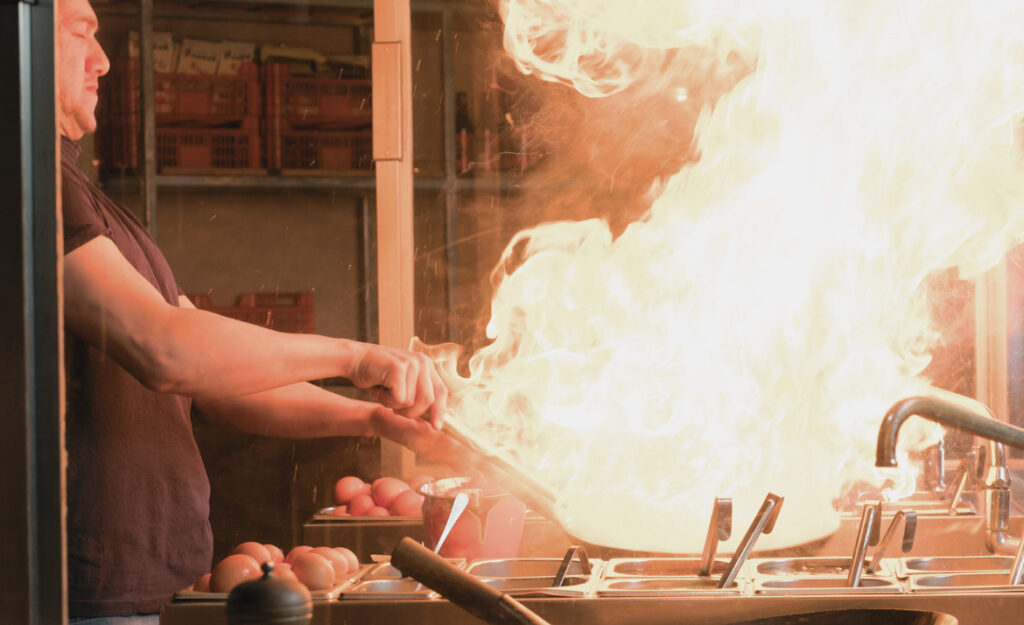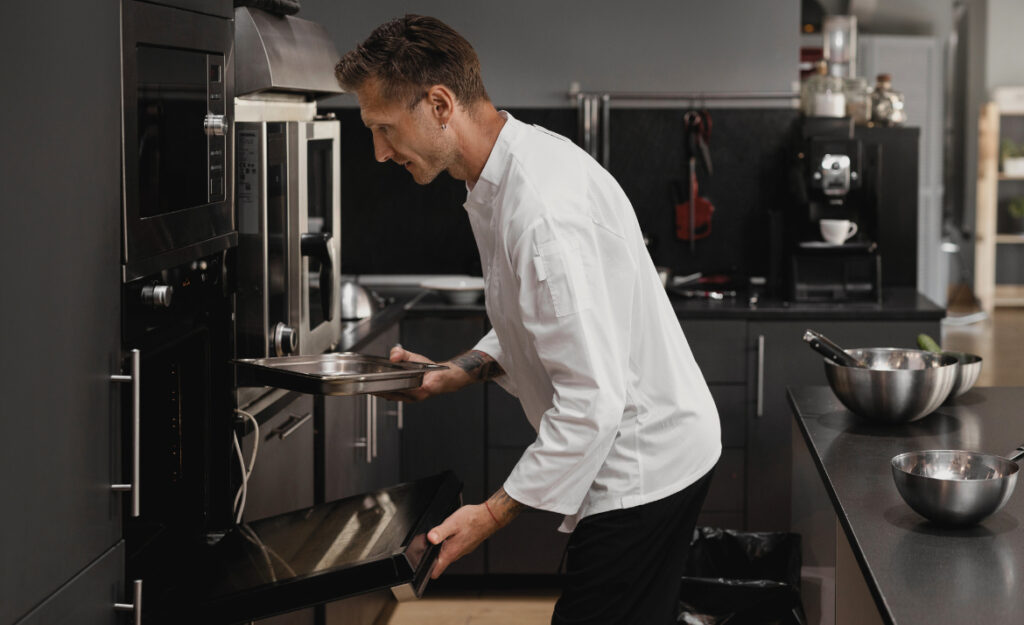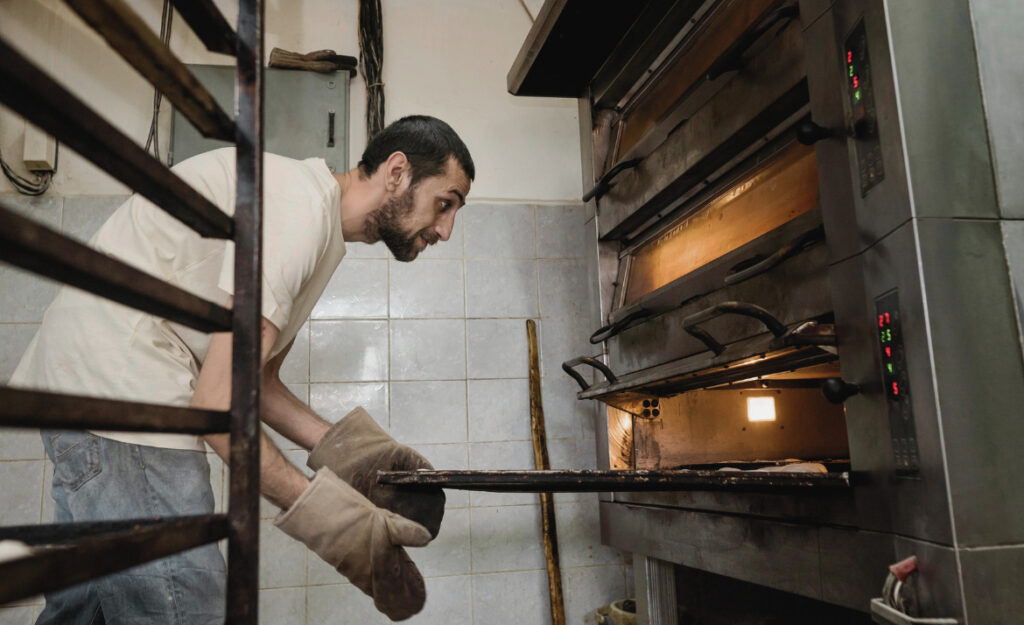
When your kitchen is the nerve center of an industrial operation, every detail counts. If you need to choose burners for heavy use, making the right choice means more than just lasting through busy shifts—it also means cutting down energy waste with smart strategies.
Energy costs eat into margins, especially where industrial burners roar from dawn to dusk. Decisions about burners ripple through your kitchen’s efficiency and budget. That’s why understanding which features save energy (and which don’t) matters to every kitchen leader.
This guide unpacks proven methods, real-world examples, and step-by-step actions that let you choose burners for heavy use and slash wasted energy in any industrial kitchen. Dive in for solutions you can put to use right away.
Pinpoint Burner Features That Prevent Energy Loss
Focus first on burner designs tailored for industrial workloads. Picking the right type lays the groundwork for steady energy savings, so you avoid scrambling to fix inefficiencies later.
Heavy-duty burners with well-sealed combustion chambers and tight valve controls keep more heat on your pans and less escaping into the air. Let’s break down the key elements, so you get next-level performance.
Spot Burner Designs That Last Shift After Shift
You can identify robust units by their thick gauge steel frames, heavy-duty cast iron grates, and replaceable wear surfaces. In conversations, experienced chefs point to weight and balance: “If the grate shakes when I bang a pan, it’s not for a real kitchen.”
Reliable burners feel solid and click into place. Watch for reinforced connectors—loose fittings leak heat and fuel. Staff should be able to clean grime from burners without tools, reducing downtime between high-volume runs.
Owners checking reviews say, “After a six-hour brunch rush, my crew hoses these off, reassembles, and they’re back at it by dinner—no cold spots and no waste.” Those are the models to prioritize.
Insist on Smart Flame Controls for Precision Cooking
Industrial burners now come with precision gas valves, step-wise adjustment dials, and automatic shut-offs. With these, cooks go straight to “medium-low” every prep cycle, trimming gas use by as much as 15 percent compared to open-flame relics.
In a scenario, a kitchen manager sets a checklist: after breakfast, reset burners to pilot and verify all flame tips are blue—not yellow. The result by month’s end: lower utility bills and fewer overheated ranges during prep lulls.
If your team jumps between tasks, remind them: “If the food can rest, so can the burner.” Script: turn down between rushes, always check for leaks, and train new hires these basics weekly.
| Burner Model | Energy Output (BTU/hr) | Control Type | Actionable Takeaway |
|---|---|---|---|
| Cast Iron Wok Burner X100 | 120,000 | Manual Valve | Set a daily cleaning schedule; check for warping to avoid leaks. |
| High-Efficiency Torch Pro | 85,000 | Step Dial | Train staff to adjust flame down during prep to save energy. |
| Sealed Induction Top 360 | 60,000 (equiv.) | Digital | Use induction when possible for steady output and fast cool-down. |
| Double-Ring Gas Compact | 95,000 | Auto-Off Sensor | Assign a team member daily to test auto-off and recalibrate. |
| Multi-Flame Modular 2000 | 78,000 | Rotary Switch | Switch to simmer during down time for slow-cook items. |
Give Your Team Clear Rules for Burner Use
Set protocols upfront so everyone knows exactly how to operate, clean, and troubleshoot heavy-use industrial burners. This prevents slip-ups that drain energy or damage costly equipment.
When your staff follows a consistent checklist, daily operations flow smoother—and your burners last longer without surprise breakdowns. These rules make all the difference for big kitchen teams.
Set Consistent Burner Start-Up and Shut-Down Routines
Consistency wins in busy kitchens. A quick, actionable protocol: Always inspect for gas leaks, debris on grates, and check for proper ventilation before lighting burners. Document these steps in a laminated checklist at each station.
- Start burners only after all prep is done, not before—reduces idle burn time and fuel waste.
- Assign a closer to shut off all burners at shift’s end, ensuring none are left idling overnight.
- Train someone to check for blue flames hourly; yellow means incomplete combustion and leaks.
- Schedule deep-cleaning every Tuesday and Saturday to keep valves clear and energy transfer high.
- Use the “pilot-off” rule: If a burner sits empty for more than 10 minutes, turn it to pilot or off completely—saving gas immediately.
Staff often say, “We keep a wipe-down rag handy for handles—if it’s sticky, it’s losing efficiency.” Encourage this visual cue and reinforce with spot checks by leadership.
Write Mini Scripts Your Team Can Use Right Away
Equip your team with clear words to use for troubleshooting or transitions. For example: “Hey, let’s knock it to low while you plate.” Practice these scripts during slow periods, rewarding quick adoption with recognition or small perks.
- Say: “Smell gas? Shut the valve, alert the manager—don’t relight until cleared.” This routine prevents unplanned shutdowns and fire hazards in one move.
- Don’t: “Just jiggle the knob if it’s stuck.” Instead: “Rotate slowly, check for resistance—if it persists, call maintenance.” This ensures equipment stays reliable through peak demand.
- Emphasize: “Blue tip means go, yellow means no.” Easy color cues reinforce safe and efficient burner use without needing extra training sessions.
- Script for new hires: “If you’re unsure, stop and ask—don’t guess. Better break a flow for a second than cause a major fix.”
- Finalize each shift with: “All burners cool? Lights out, logs signed.” Prevents after-hours energy drain and demonstrates accountability to supervisors.
Managers say: “Easiest fixes come from regular reminders, not big talks. Our best days run like clockwork when the rules are visible and teams feel empowered.” Post these scripts for instant reference.
Optimize Burner Loads According to Real-World Kitchen Scenarios
Assigning the right pan to the right burner keeps your operation humming and ensures you get full value from heavy-duty equipment. Overflowing or underloaded burners quickly waste energy and disrupt production.
When you match burner load to pan size, dish, and demand, you prevent energy leaks and notice fewer bottlenecks. A kitchen leader might say: “If it simmers, use back left—if it sears, front right.”
Select Burner Zones That Suit Specific Cooking Needs
Study your dinner rush to see which burners consistently hit top output. A common scenario: The sauté station goes all out from 6-8pm, but the broiler idles. Prioritize clean, high-output burners for busiest zones, and switch lagging stations to energy-saving or off settings when quiet.
“After brunch, turn off the griddle—keep the soup corner rolling.” Meal tempos guide smart use. Make burner assignments a standing rule. A chef might say, “Sauce always goes back left; it never needs full flame.”
Checklists that include these natural breaks help your team internalize routines and cut wasted heat. Share burner zone maps in new hire training for quick mastery.
Diversify Burner Types for Tasks and Volume Downsizing
Industrial kitchens thrive by using specialized burners. Pair a wok burner with rapid preheat for stir-fries, but keep low-BTU simmerers for soups or reductions. Choose burners for heavy use based on the most common tasks in your kitchen’s flow.
A pastry chef likes small, steady burners: “I finish custards on low, same every night—no burned edges and no scorching.” Line cooks grab large gas rings: “Need big BTUs for rapid boil, so pasta’s never late.”
Track which jobs burn through the most gas, and set reminders to rotate high-BTU burners only when needed. Consider seasonal menu shifts: fewer burners for slow summer lunch, all on deck for winter dinner parties.
Target Energy Waste Hotspots With Concrete Corrective Actions
Refining energy use often means pinpointing hidden trouble spots—where heat escapes, burners idle without load, or staff drifts from best practices. Target these with direct fixes for immediate gains.
Check valve connections, insulate gaps around the burners, and station timers. When a prep cook says, “I always forget that back burner,” add a brightly colored timer or sticker as a quick reminder tool.
- Check for draft and leaks around burners weekly; seal any gaps with high-temp sealant for gas lines.
- Install heat deflectors or shields behind burners to keep more energy at your pans and less rising up the wall.
- Assign responsibility for energy monitoring: rotate this role with shift leads, logging gas/energy use every Friday for review.
- Use visual heat maps to mark spots prone to loss; cross-check these with your kitchen’s temperature patterns midday.
- Rotate pan positions and check flame distribution after deep-cleaning—if parts of the ring burn uneven, recalibrate or call for repairs.
A hands-on supervisor shares: “We tape a reminder right on the fryer control box—‘Vent closed? Save heat, save dollars.’ Every little step adds up.”
Integrate Timer Systems and Alerts for Idle Burner Reduction
Timers bridge human gaps. Many kitchens add clip-on digital timers or smart sensors that nudge staff: “Turn me off!” Start by surveying the crew—what timing method works for their rhythm? Place clear timers at every station.
In world-class kitchens, chefs set standard intervals for reducing heat: After every batch of soup, downshift the burner for the next 20 minutes, using a timer’s beep to remind.
Maintenance logs should track timer effectiveness; review at the end of each month, swapping placements or brands if compliance slips. Consistent reduction of idle heat yields clear, documented savings.
Equip Your Staff With Targeted Burner Maintenance Routines
A clean, well-serviced burner is an efficient one. Schedule precise maintenance, not just general cleaning, to catch subtle issues that threaten both performance and safety. The best routines are easy to remember and hard to skip.
Post a maintenance calendar in the staff area. “Every Friday, burners off by 3pm, grates off at 3:15, deep clean and reassembly by 3:45.” Strict timing habits build pride in operation—and fewer late-night breakdowns.
Develop Visual Inspection Habits
For each close, assign a team member to inspect every burner. Use a flashlight to spot build-up or irregular colors in the flame. If you see orange or hear sputtering, log the problem for same-shift inspection.
Keep spray degreasers and soft brushes within reach so fixes happen on the spot. Reinforce a simple script: “If it looks wrong, clean it now—don’t delay.” Equip teams to fix minor grime and log bigger repairs.
Staff report fewer burnouts and better flame response after shifting to this routine. They notice, “Sauté pan heats up faster. Soup pot never scalds.” Celebrating small wins builds lasting habits.
Document and Address Repeating Issues Immediately
Log every repair, adjustment, or cleaning event in a shared binder or app. Every time a burner misfires or needs recalibration, write the details—date, symptoms, solution, person responsible.
This trail gives managers a full view: Are certain burners always failing? Is there a seasonal pattern? Are final shifts missing any steps? The answers drive future repair or replacement schedules.
One chef says, “Our system caught a leaky valve twice in a month—the fix was quick, the savings were immediate.” Acknowledge crew who flag repeat issues; encourage proactive care of heavy-use gear.
Choose Burners for Heavy Use Based on Menu and Volume Trends
Menu planning connects directly to your choice of burners. Certain dishes and cooking styles demand specific energy outputs and flame styles—matching burners to these patterns maximizes both efficiency and food quality.
Analyze which stations see the highest turnover. “Grill gets slammed at lunch, sauté at dinner, soup never rests.” Check output logs. Rotate or upgrade based on proven patterns, not guesswork.
Sync Replacement Schedules to Usage Patterns
Burner lifespans tie closely to use. If one station never cools down, it’ll need servicing more often. Rotate new gear into high-abuse slots first; retire aging gear to off-peak stations for lighter duty.
“Swap the wok burner quarterly; move the old one to the dessert station.” Match replacement cycles to usage logs, which builds a predictable budget for upgrades while avoiding catastrophic failures mid-service.
Concretely: If a burner’s performance drops but demand remains high, replace immediately—don’t limp along hoping for improvement.
Document Burner Matchups to Menu Evolution
If your menu adds longer braises or more high-heat stir-fries, select burners that fit—double-ring rapid burners for braising and high-BTU, broad-flame burners for searing.
Every six months, review the top ten dishes and map them to burner use. Move less-used burners to prep lines; keep high-volume gear at the ready in main cooking zones.
“New flat-top gets all the new breakfast traffic—old range slides to pastry.” Trace every food and flame matchup on a wall map. Teach this system to every new team member for quick adaptation.
Build Kitchen Culture Around Burner Efficiency
Success with energy-smart burners doesn’t just come from hardware; it’s embedded in your kitchen’s culture. Encourage everyone to spot inefficiencies and suggest fixes. Ownership boosts both morale and savings.
Model proactive care: Chefs who start with, “Let’s clean before rush starts—less downtime, more reliable heat,” create habits in new and longtime staff. A culture of accountability protects gear and margins.
Share shout-outs for energy-saving wins. Post charts showing weekly savings; celebrate departments that cut waste. Define “team energy leader” as a rotating role so every employee learns the ropes and tips get widely shared and repeated.
Frequently Asked Questions
- What’s the recommended cleaning frequency for heavy-use burners?
Clean all working surfaces and removable grates daily. Deep-clean interiors and valves at least twice per week, while conducting bi-monthly inspections for leaks, scorch marks, or uneven flames. - Should I turn burners off between meal periods or use pilot mode?
Switch to pilot or low-flame mode whenever a burner sits unused for more than ten minutes. For long breaks between shifts, shut burners off completely to ensure safety and minimize gas waste. - How do I know which burners match specific menu items?
Review your menu and assign high-BTU burners to frying, searing, and boiling; reserve low-output burners for slow-cooking, simmering, or keeping sauces warm. Audit assignments every season with actual cooking volumes. - What’s the impact of staff routines on burner efficiency?
Consistent routines, like immediate shut-downs, regular inspections, and team drills, deliver lower energy bills, less equipment downtime, and longer lifespans for each burner. Train staff with clear, repeated checklists for best results. - Which maintenance tasks prevent most breakdowns in heavy-use industrial kitchens?
Regular degreasing, flame color checks, prompt leak sealing, and documentation of problems address most common failures. Assign responsibility and rotate the role to catch more issues early and keep burners running smoothly.



